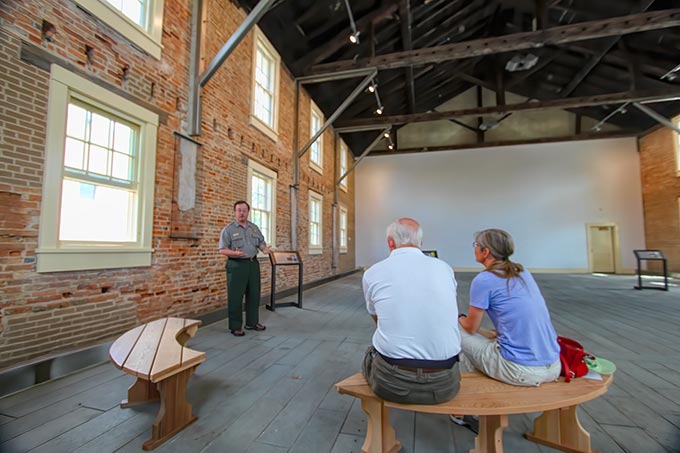I just finished watching day three of the Democratic National Convention. One sentence in Nancy Pelosi’s speech caught my attention. Speaking about women, she said, “Our diversity is our strength. Our unity is our power. This month, as America marks the centennial of women, finally, women winning the right to vote, we do so with 105 women in the House…To win the vote, women marched and fought, never gave in. We stand on their shoulders, charged with carrying forward the unfinished work of our nation, advanced by heroes, from Seneca Falls to Selma to Stonewall.”
I wondered how many people understood her reference to Seneca Falls. I did. Nine years ago I was invited to visit the beautiful Adirondacks Park in upstate New York. After spending a couple of weeks in the mountains, I decided to drive west to Niagara Falls, which I hadn’t seen since I was a young girl. By pure coincidence, my first stop was in Syracuse, where I happened upon the Erie Canal Museum. Several hours later, I was hooked on the story of the building of the Erie Canal and its importance to the westward expansion of the United States. My journey across New York State suddenly took on a theme. For the next couple of weeks I followed the Erie Canalway National Heritage Corridor, stopping at remaining stretches of the canal in lovely small towns like Camillus, Geneva, Lockport and Seneca Falls NY.
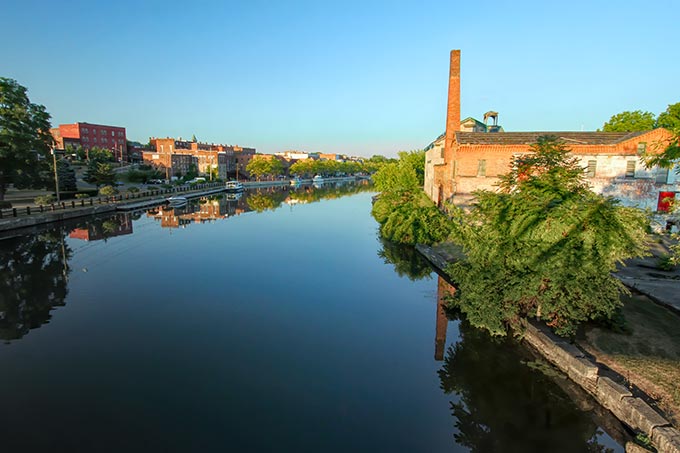
It was in Seneca Falls NY, that I discovered the piece of history to which Speaker Pelosi referred. The women’s suffrage movement was born in this tiny, unassuming town. The struggle for womens’ voting rights in the United States actually began in England. Elizabeth Cady Stanton and Lucretia Mott met at the 1840 World Anti-slavery convention in London. Mott was an official delegate, as was Henry Stanton, Elizabeth’s husband. After long debate, male delegates voted to bar participation by women and relegated female delegates to the back of the hall. Disappointed and angered, the American women met informally. According to Stanton, their segregation, “stung many women into new thought and action…Mrs. Mott and I…resolved to hold a convention…to advocate the rights of women.”
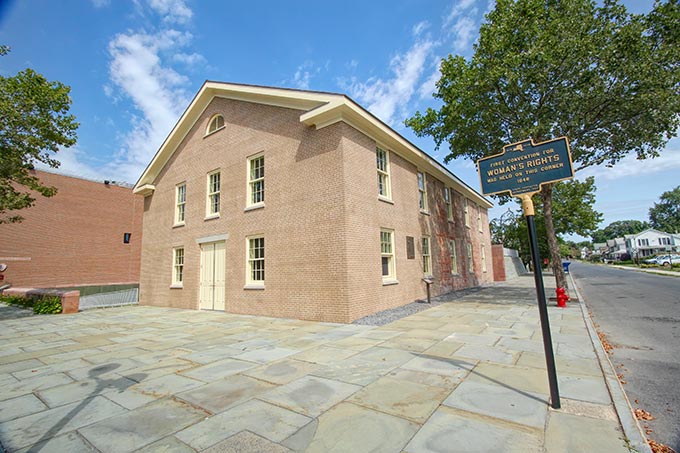
Back home, Stanton and Mott joined forces with three other women from the Seneca Falls area: Mary Ann McClintock, Jane Hunt, and Martha Wright. The five formed a group that would transform American society. They organized meetings in living rooms and on front porches, in private and in public. In 1843, amidst emerging local and national controversy over freedom of speech, the role of women, temperance, and the morality of slavery, a few devoted Seneca Falls residents formed one of the nation’s first Wesleyan Methodist congregations. Committed to equality and free speech, the chapel, known locally as the “Great Light House,” offered the use of it to reform speakers.

In 1848, the five women suffragettes summoned reformers from across the northeast to attend the First Women’s Rights Convention at the Wesleyan Chapel in Seneca Falls. For two days as many as 300 attendees, both male and female, considered the role of women in a democratic society. The result was the Declaration of Sentiments – a document modeled after the Declaration of Independence. Insisting that “all men and women are created equal,” the Declaration of Sentiments pointed out that most women could not vote, own property, attend college, or work professionally. The 68 women and 32 men who signed the Declaration of Sentiments on July 20, 1848, pledged to hold conventions, employ organizers, circulate tracts, and petition State and Federal governments for women’s rights.
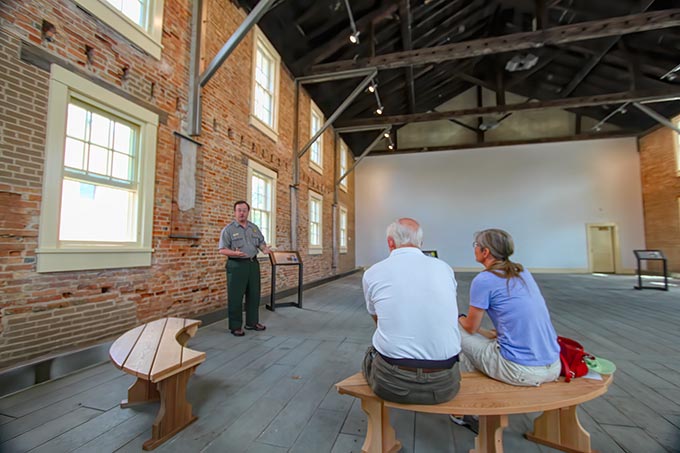
I pondered the likelihood of such an important movement beginning in this tiny hamlet. Why Seneca Falls, New York? Though located hundreds of miles from major east coast cities, the mills and industrial enterprises in Seneca Falls provided excellent access to the outside world. Railroads, the Erie Canal, and turnpikes carried flour, textiles, and pumps from Seneca Falls throughout the nation. The organizers of the First Women’s Rights Convention hoped those same networks would spread word of the convention and its reform ideas around the globe. It did.
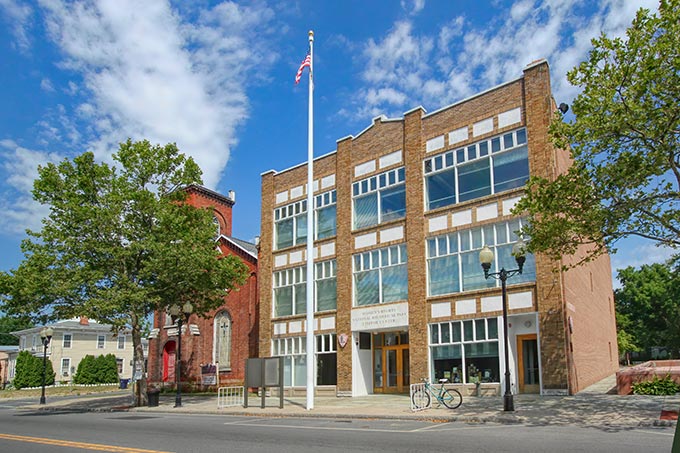
In 1851, the Earl of Carlyle introduced the very first resolution in favor of women’s voting rights in the British House of Lords. The First Women’s Rights Convention led to a series of women’s rights conventions being held across America. By 1856, presidential candidates were debating women’s rights. Increasing numbers of men and women worked together to resolve the 15 grievances laid out in the Declaration of Sentiments. In the 1870’s, the newly formed National Woman Suffrage Association continued the effort by lobbying state legislatures and the U.S. Congress for civil rights. The 72-year long fight ended in 1920 with the ratification of the 19th amendment, which finally gave women the right to vote. Britain followed America’s example a year later.
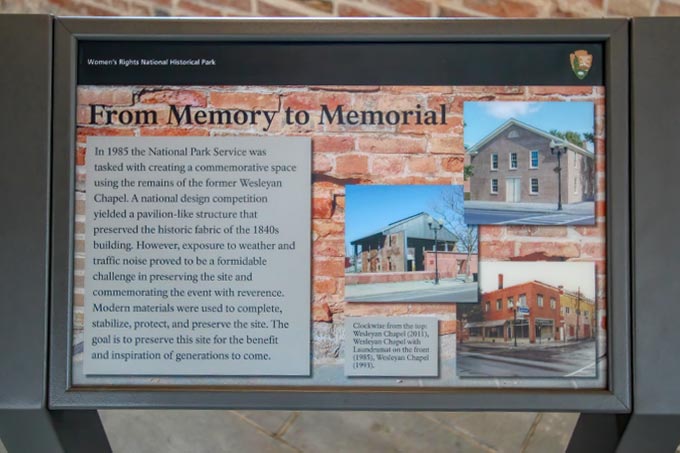
After the Civil War, the Seneca Falls Wesleyan Chapel was sold to a private party. Over the years it served as a movie theater, laundromat, retail store, and even a garage. Though it was never destroyed entirely, only fragments of the original 1843 structure remained by the time the National Park Service acquired it. Fortunately, the building had “good bones.” The foundation was sound and NPS was able to salvage many of the old bricks, plaster walls, and wooden framing. Today the building is the centerpiece of the Women’s Rights National Historical Park. It tells the story of the first Women’s Rights Convention held in Seneca Falls in 1848 and documents the struggle for civil rights, human rights, and equality that continues today.

The town of Seneca Falls has added to the experience with construction of the Ludovico Sculpture Trail on Bridge Street near West Bayard Street. Numerous sculptures inspired by the women’s rights movement, created primarily by women sculptors, are on display along the 1.75-mile trail. And at the end of the trail is the town, where cute shops and cafes occupy the historic brick buildings that line the main street. Truly, a visit to this upstate New York town offers a fascinating window into the history of the women’s suffrage movement in America.

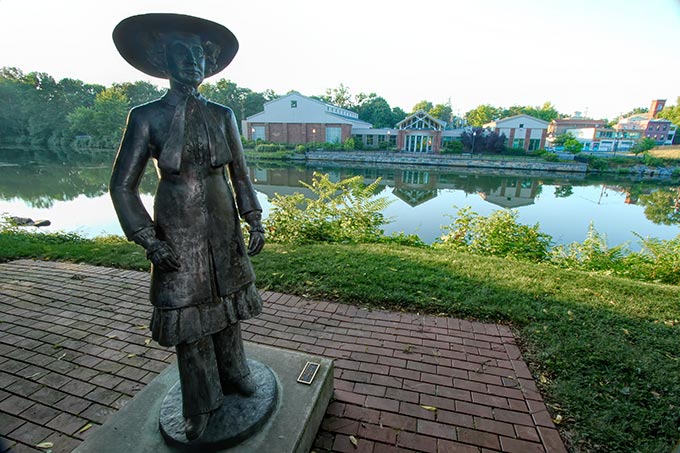
You May Also Enjoy:
Frozen Niagara Falls connect the U.S. and Canada
Adirondack Lakes – A Water Wonderland
Diamonds and Rubies, Oh My! – Rockhounding in Upstate New York
VIDEO: Rafting and Tubing Down AuSable Chasm in the Adirondacks
